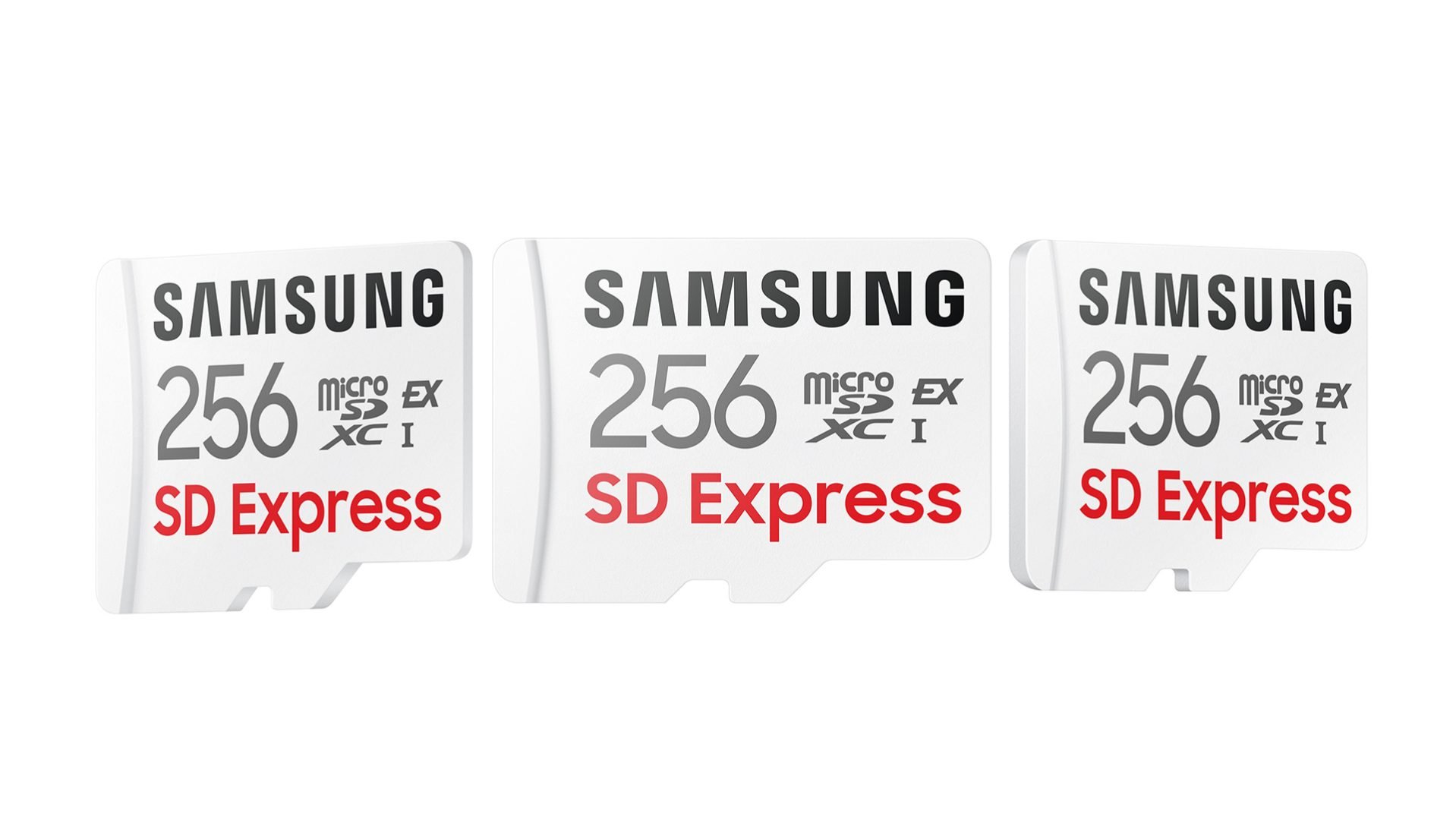

Samsung has announced its first viable SD Express cards, which it claims is an industry first. Announced in 2017, the SD Express specification essentially does for SD and microSD cards what CFexpress did for XQD.
It’s the newer, faster format for future generations of cameras and other tech. They offer high speed for clearing buffers more quickly and shooting higher bitrate footage. But are they ready for prime time just yet?
Samsung SD Express microSD
While the SD Express specification has been out for a while, it’s not really been a viable product yet.
The SD Express 7.0 specification was announced in 2018. It promised transfer speeds of up to 985MB/sec and hypothetical capacities up to 128TB. These specifications were made obsolete in 2020 by SD Express 8.0 specifications.
Lexar announced in 2021 that they were planning to release some SD Express in 2022, but they never seem to have actually appeared. New SD Express specifications were released in 2023. There are a few SD Express cards out there, such as this full-sized SD Express card from Ritz Gear, but when it comes to microSD, nothing’s really changed until now.
Samsung’s announcement is essentially a development announcement. There’s no actual product yet, although the company expects to release a 256GB SD Express microSD card at some point in 2024. It will offer transfer speeds of up to 800MB/sec.
This isn’t as much as the latest and greatest CFExpress 4.0 cards, but it’s significantly more than the 104MB/sec UHS-I and 300MB/sec UHS-II SD card specifications.
SD Express – Backwards Compatibility
SD Express is backwards compatible with the regular SD cards, readers, cameras and other devices we know and love. However, there are some caveats. Older UHS-I and UHS-II cards in SD Express readers are limited, as are SD Express cards in older readers.
Here’s the compatibility chart as it stood in 2018 when the SD Express 7.0 specification was launched. Nothing appears to have changed in the last six years in this regard.
Why now?
At some point, SD Express has to become a real thing. So, why not now? Its backwards-compatible nature means it’s more likely to be adopted by consumers before professionals, especially if the price is right.
Consumer users mostly have cameras with UHS-I card slots. And almost all microSD card devices are UHS-I. If the UHS-I microSD cards are slowly replaced by SD Express microSD cards in the stores, most consumers won’t even know the difference.
There have been a number of UHS-II microSD cards available for several years, and despite cries from the customers of drone and action camera companies to be able to shoot at higher bitrates, it’s never been implemented.
Perhaps, if Samsung is getting in on the new format, SD Express microSD might be quicker to adopt than UHS-II microSD has been.
I don’t think there’ll be an overnight revolution, as we saw in the shift from XQD and CFast 2.0 to CFexpress. Rather, we’ll probably see more of a gradual transition over the next few years as more companies release cards.
The devices will be sure to follow.
Price and Availability
At the moment, Samsung has only announced that a 256GB SD Express microSD card is coming. They haven’t mentioned a price or exactly when it will be released. The cards “will be made available for purchase later this year” is about as specific as it gets.








